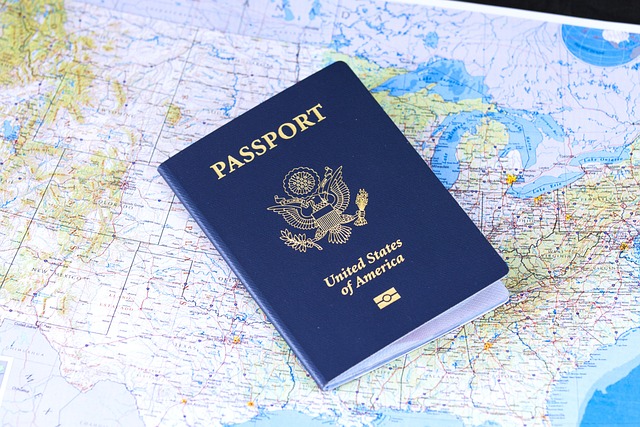Rapid Translate Team
The adoption journey entails lots of legal paperwork. You can choose to adopt a child from your country or another. But, you must learn the processes for domestic vs international adoption. Understanding both processes will enable you to make an informed decision.
Each country has specific laws that govern the transfer of parental responsibilities. Therefore, adoptive families must maintain standards and follow due processes, especially when translating documents for adoption.
Keep reading to learn how adoption processes differ across locations.

Table of Contents
Are the Processes for Domestic vs International Adoption the Same?
The processes for international and domestic infant adoption differ. The steps are more elaborate when processing adoption papers from a foreign country. While some procedures may be present in both processes, the means of achieving them differ. Find below an overview of both processes.
1. Domestic Adoption Within the U.S.
When adopting a child in the U.S., you must contact an adoption agency for proper guidance. The adoption agency will help you kickstart the process as a prospective parent. Following this, a social worker will visit your home.
The social worker will analyze your home environment to see if it suits a child and check your financial status. You can now draft your adoption profile, a presentation of information that can help the birth family know you better.
The agency will use this profile to match you with a child. If the birth parent is in the picture, you may have to communicate with them before the paperwork begins. Important documents in this process include the adoption consent and custody forms, petition, relinquishment, birth certificate, and its amended version.
Others are the adoption decree, power of attorney, agency contracts, and court orders. Finalizing the documentation leads to placement, where you receive custody of the child.
After this, a social worker will visit randomly to offer guidance and support. You can then send an adoption petition, after which you’ll attend a finalization hearing for the final decree.
2. International Adoption Outside the U.S.
To adopt a child internationally, select your desired country and research its adoption laws and requirements. If the country is part of the Hague Adoption Convention, you can hire a Hague-accredited agency or a licensed adoption.
Following this is an assessment of your home and background checks. The home study process can linger for months, after which you’ll compile your application documents. These include the adoption application, home study, police, financial and medical records, and any other document required in that country.
Each country has an agency or institute that collects these applications. After submission, wait for the government to match you with a child. You’ll have to travel to meet the child and begin legal proceedings when they do. You can then process and translate a visa and travel documents for the child before traveling to the U.S.

Domestic Adoption vs International Adoption: How They Differ
There are vast differences between the procedures for domestic and international adoption. For example, the legalities of international adoption are more complex because of varying laws, such as the Hague Adoption Convention.
Therefore, you must learn and implement the necessary laws so the government can grant your adoption petition. You must also create an amended birth certificate when adopting a child.
Other requirements include processing immigration papers for the child. You must also visit the child’s birth country before placement. You must also visit the child’s birth country before placement. Travel and visa fees add to international adoption costs, making it more expensive than the domestic process.
Another difference is the need for cultural adaptation, as the adoptive parents must have no cultural bias. The child will also have to assimilate to a new culture. Also, in international adoption, there is a great need for translating official documents.
You must provide your medical history and receive the child’s. Without translation, you and the officials of both countries will be unable to understand the content of these documents. Furthermore, domestic adoption offers options like open or semi-open adoption, which aren’t available internationally.

The Cost of International Adoption vs Domestic Fostering
International adoption is more expensive, as adoption fees differ by country. Travel expenses, translation fees, and other monetary concerns also exist. On the contrary, domestic adoption does not require traveling and translations; thus, the cost is lower. However, you may have to cover some expenses for the birth mother.
It’s difficult to predict adoption costs, as circumstances such as the type of adoption, agency, and legal fees affect cost. Most adoption agencies help their clients with budget preparation by estimating the funds needed for the adoption process.
You can budget $15,000 to $30,000 for domestic adoption. However, you need between $30,000 and $60,000 for international adoption. Nonetheless, you can find a country with cheaper adoption fees.
However, you must consider travel expenses, adoption, and legal fees. Also, consider the cost of visa processing for the child. Thus, it helps to prepare financially for any adoption process, whether domestic or international.
Translating Documents for Adoption Domestic vs International
If you choose to pursue international adoption as a hopeful parent, you must recognize the importance of document translation. To adopt a child from a country that speaks a different language, you must translate your documents before submission. Similarly, you must translate the child’s birth certificate and vital records.
You will need to procure a certified translation for some of these documents. However, some countries may demand apostilled or notarized versions of documents to confirm their origin and authenticity.
Thus, you need a language service agency to help you in whatever capacity you require. Though there are several agencies, you need one with experience in international adoption translation.
Also, ensure the agency is proficient in English and whatever target language you require. It’ll also help to find a reliable agency that meets agreed delivery times without compromising quality. Hence, you need to conduct thorough research to find one.

Translate and Certify Your Adoption Papers With Rapid Translate
The translation and certification of private adoption paperwork require attention and caution. Therefore, a non-professional cannot handle such tasks. Most times, it’s impossible for you to predict whether you’ll only require a standard translation or other language services.
Thus, opt for a reputable translation agency like Rapid Translate. We offer a full language service package with industry-accredited staff, including professional translators, certified experts, notaries, and interpreters.
Therefore, we can fully render any language service you need during the domestic vs. international adoption. We offer over 60 language combinations and different specializations besides adoption.
Thus, feel free to contact us for any language communication needs. Hire Rapid Translate to enjoy easy communication beyond borders!
FAQ
Find below answers to some frequently asked questions concerning adoption.
What is the difference between domestic and international adoption?
Domestic adoption involves an adoptive parent and child from the same country, while international adoption involves different countries. However, there are other differences, as the steps for both procedures vary due to distinct national laws.
What’s the role of adoption agencies?
Adoption agencies are the link between adoptive parents, adopted children, and birth parents. They help families find children to adopt and monitor their well-being after adoption. They are also responsible for conducting home study and providing counseling if necessary.
Can I self-translate adoption documents?
No, self-translation is unacceptable for official purposes. Since you’ll be submitting these documents to national and international agencies, it’s wrong to translate yourself. If you do, the agencies will reject your translation.













